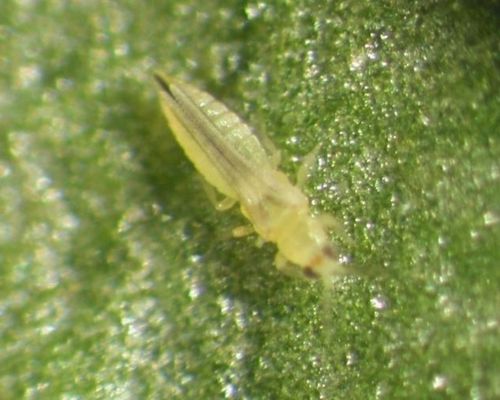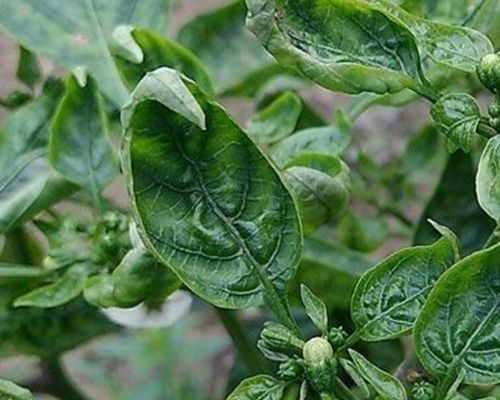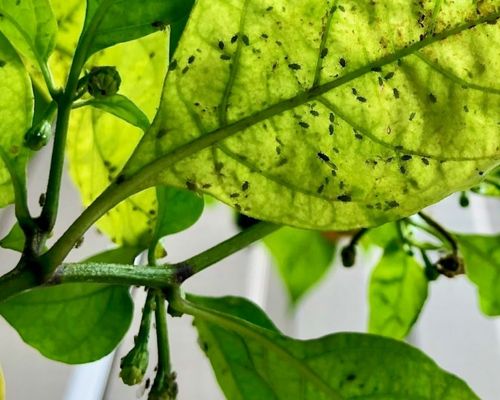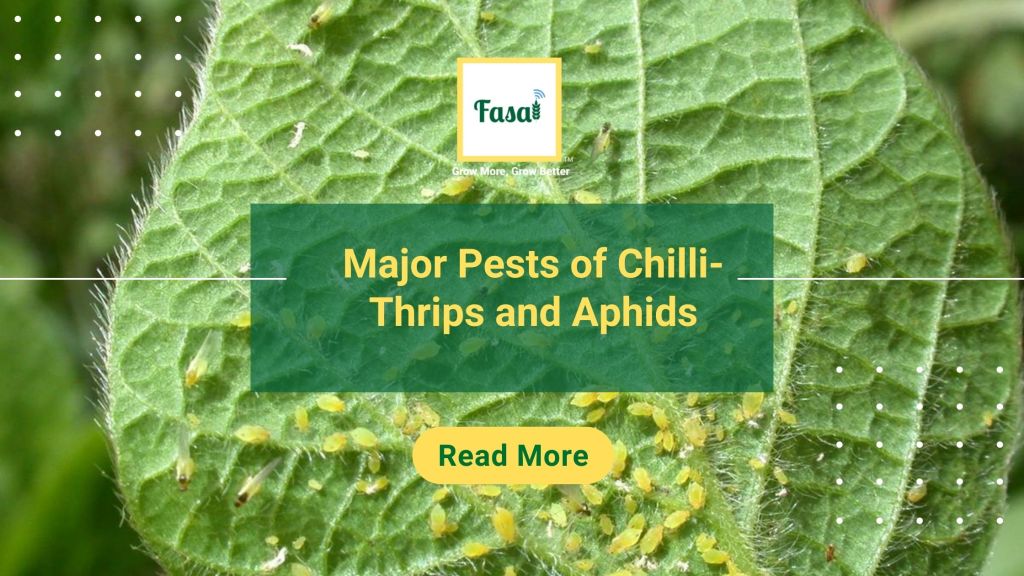This blog carries information about the destructive nature of chilli thrips and aphids, its identification measures and management techniques.
One of the significant spice crops that is practically grown throughout the state is the chilli. It is one of India’s most widely grown crops; the chilli is susceptible to a variety of insects. Pests infesting this crop include thrips, aphids, mites, cutworms, root grubs, and more. In this blog, we will talk about the most damaging chilli pests, thrips, and aphids. These pests significantly reduce agricultural output.
Chilli thrips
Scirtothrips dorsalis is one of the most highly invasive species of insect thrips. They are small (> 2mm long) cigar-shaped insects. The adults are light yellow in colour with fluffy, black wings and incomplete bands of dark spots on the top of the abdomen.
The pest has dramatically spread over the past 20 years to many countries, including Thailand, France, Spain, and India.

Symptoms
- The infested leaves become wrinkled and curl up.
- Buds with an extended petiole grow brittle and fall off.
- Infestation at an early stage causes stunted development and reduced flower and fruit yield.
- The affected areas get scarred, the leaves become deformed,
- The buds, flowers, and immature fruit become discoloured.
- Damaged tissue might have a silvery, brown, or black appearance.

The host range for Chilli thrips
Chilli thrips are found in nearly every chili growing area. In addition to chillies, it also infests grapevine, cotton, groundnut, bottle gourd, guava, cotton, and groundnuts. On an irrigated chilli crop, it is less frequent than on an unirrigated one.
General Preventive Measures
- Intercropping is highly effective with agathi crop (Sesbania grandiflora) to provide shade to control the thrips population.
- Farmers should never grow chilli after sorghum crop. And should never follow chilli and onion mixed crops.
- Sprinkling water over seedlings to prevent thrips from multiplying is highly effective.
- Treating seeds with Imidacloprid 70 percent WS @ 12 g/kg of seed.
- Application of Carbofuran 3 percent G @ 33 kg/ha or is also proven highly beneficial to manage chili thrips.
- Erecting blue sticky traps @ 4-5 traps/acre.
Aphids
Aphids are a significant pest in chilli. The ability of aphid colonies to proliferate spectacularly allows them to utterly destroy a single chilli plant or an entire crop in a matter of hours. It is necessary to take action as soon as an infestation is discovered rather than waiting.

Symptoms
- Aphids generally appear on the bottom leaf surface, with tender stems and leaves.
- Aphids excrete honeydew, which draws ants and sooty mould, turning the leaves black and lowering the rate of photosynthetic activity of the plant.
- Aphids generally suck the sap to weaken the plant.
- Pods that turn black from sooty mould lose quality and sell for a low price.
- Aphids and viral infections acting as vectors both directly and indirectly affect yields.
Favorable conditions for Aphids
December and January are often the most optimum time for aphid multiplication as it is dry and chilly during this time, which is favorable for this pest. In contrast, intense rainfalls are highly destructive for this pest.
General preventive measures
- Use of crops in alternate rows with plants that repel pests, such as marigolds, onions, and garlic.
- Use agro nets to prevent pests from entering crop seedlings and removing them at the flowering stage.
- By avoiding the use of wide-spectrum insecticides and ensuring proper habitat, you can preserve natural adversaries (such as ladybird beetles, hoverflies, and parasitoid wasps).
- Avoid over-application of Nitrogen to the soil since it can make plants more succulent and enticing to aphids.
- If the farm was infested with aphids, remove and burn the residue soon after harvesting.
- Practice seed treatment before sowing- Imidacloprid 70% WS @ 400–600 g/100 Kg seed.
How technology can help
- With rapidly growing technological innovations in the agriculture sector, nowadays, it is easier to predict pest infestations on your farm.
- Any pest to attack the farm requires certain favorable microclimate and weather conditions.
- Knowing the right conditions for the pest attack can help predict the attack; hence, the right actions could be taken on time to control the pest in advance.
- This strategy is very helpful in pest management and reduces pesticide usage to a great extent and helps save input costs. The Fasal system helps farmers in doing exactly this.
- Fasal system, with the help of its sensors, records the micro and macro climate of the farm and, with that data, helps in predicting any possible pest attack.
Don’t believe in words. Try it yourself.

Leave a comment